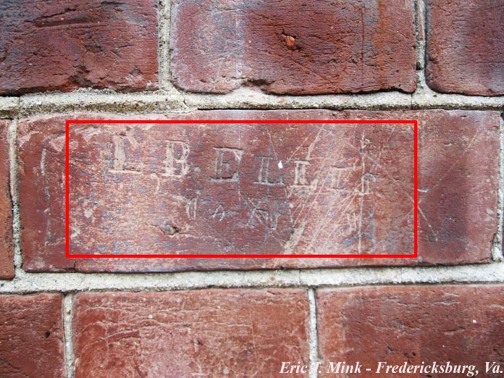From: Eric Mink

The Innis House – 2019
The Innis House is the last building along Fredericksburg’s Sunken Road to have witnessed the fighting that occurred there in 1862 and 1863. Built ca.1859, the small wood frame building is today an exterior exhibit, occasionally open to the public during the summer months. Visitors who walk along Sunken Road and stop to look through the windows of the house can see the lasting damage caused by two battles. The lead and iron missiles that filled the air in December 1862 and May 1863 passed into and through the Innis House, leaving their marks on the walls and the doors. Some bullets still remain lodged in the building’s framing timbers. The Innis House is a witness to the war and its appearance is an evocative display that conveys the destruction that twice visited Sunken Road.

Interior first floor partition of the Innis House, showing the damage caused by the war – 2019
The National Park Service (NPS) acquired the Innis House in 1969. The agency stabilized the building in 1973 and four years later began the process of restoring and rehabilitating the house. Post-Civil War additions and vegetation were removed and a new wood shingle roof was added. In 1985 began the longer and more involved effort of returning the interior of the building to its wartime appearance. It was in the course of this work that park staff uncovered lasting evidence of the war.













